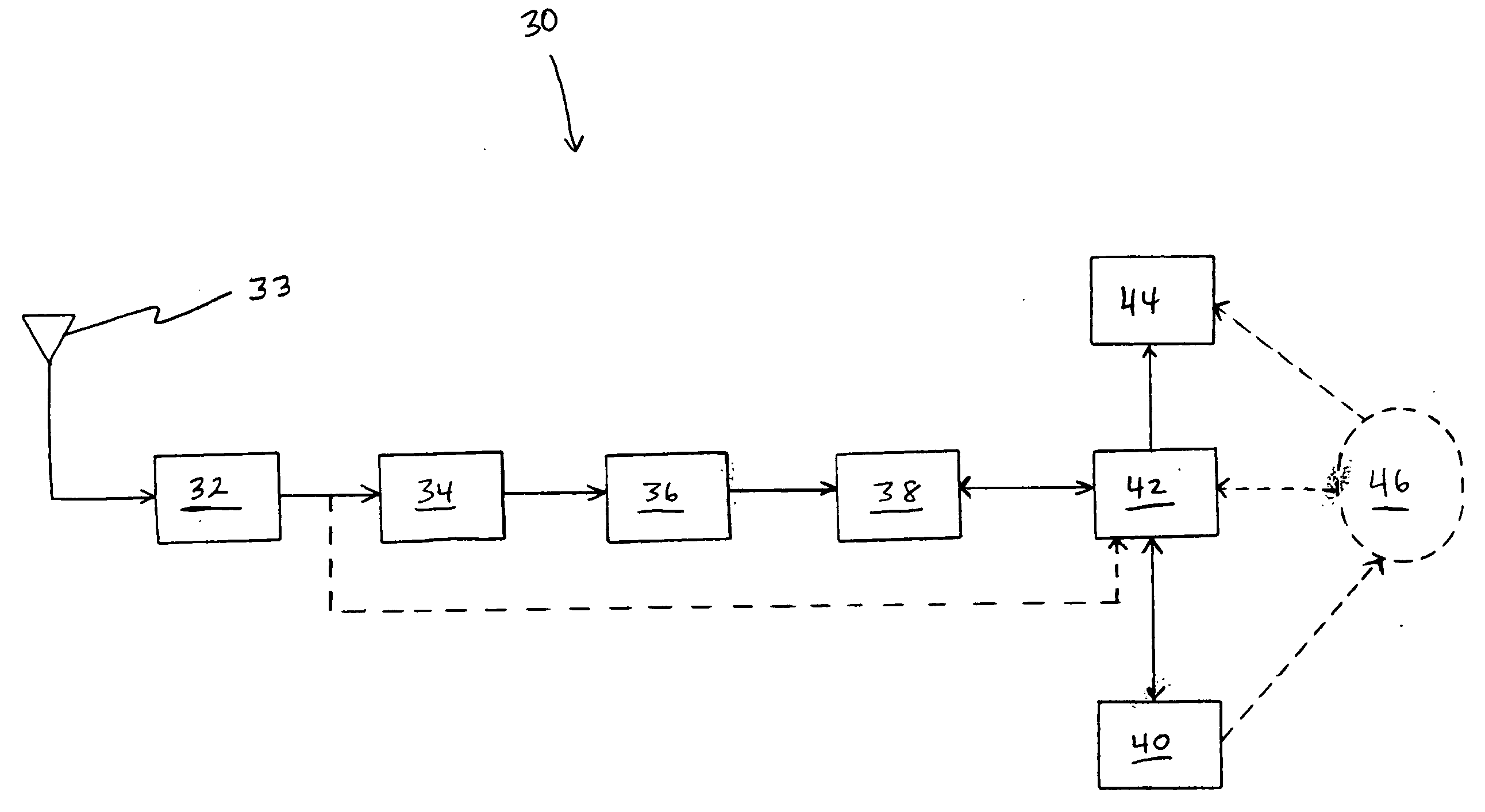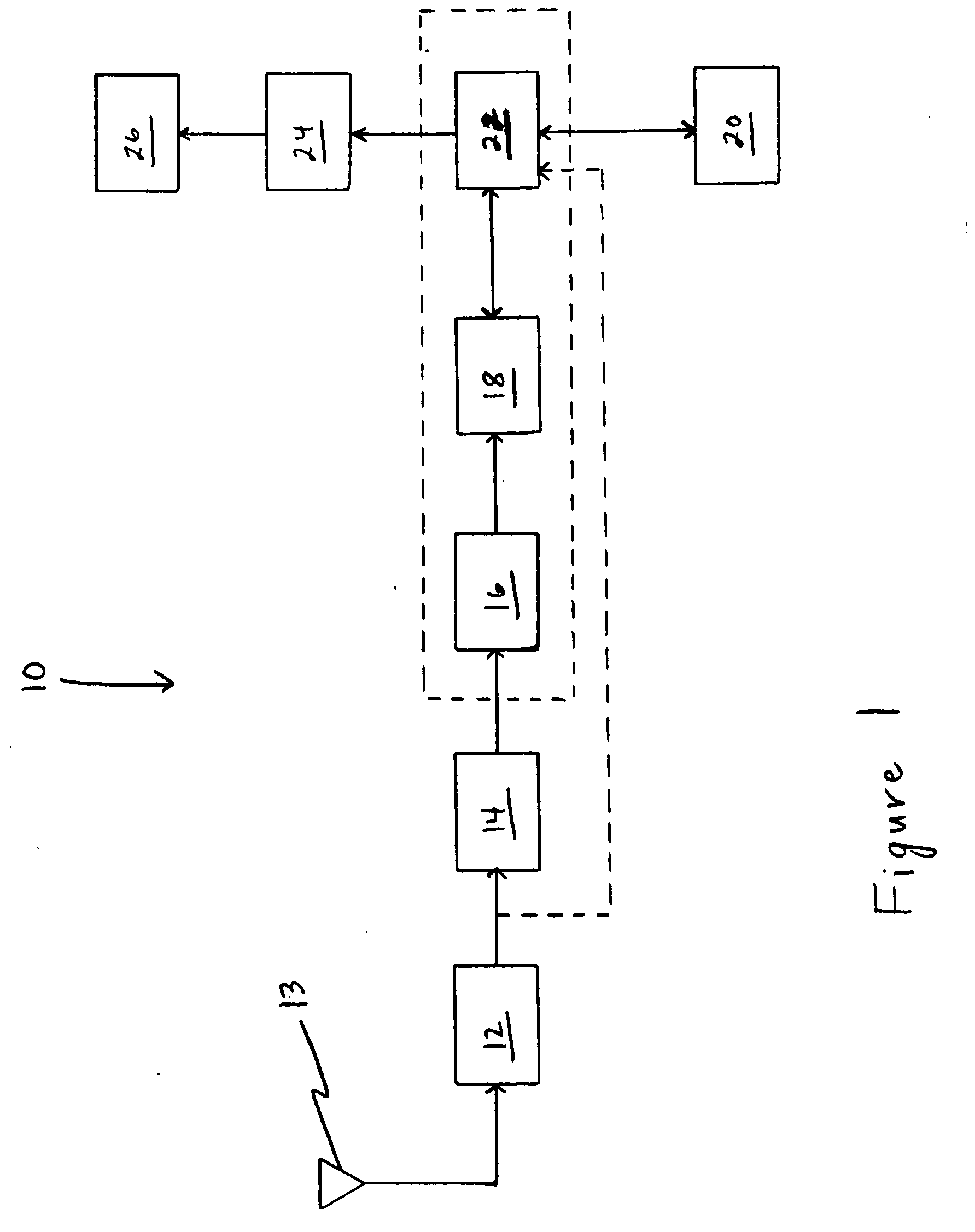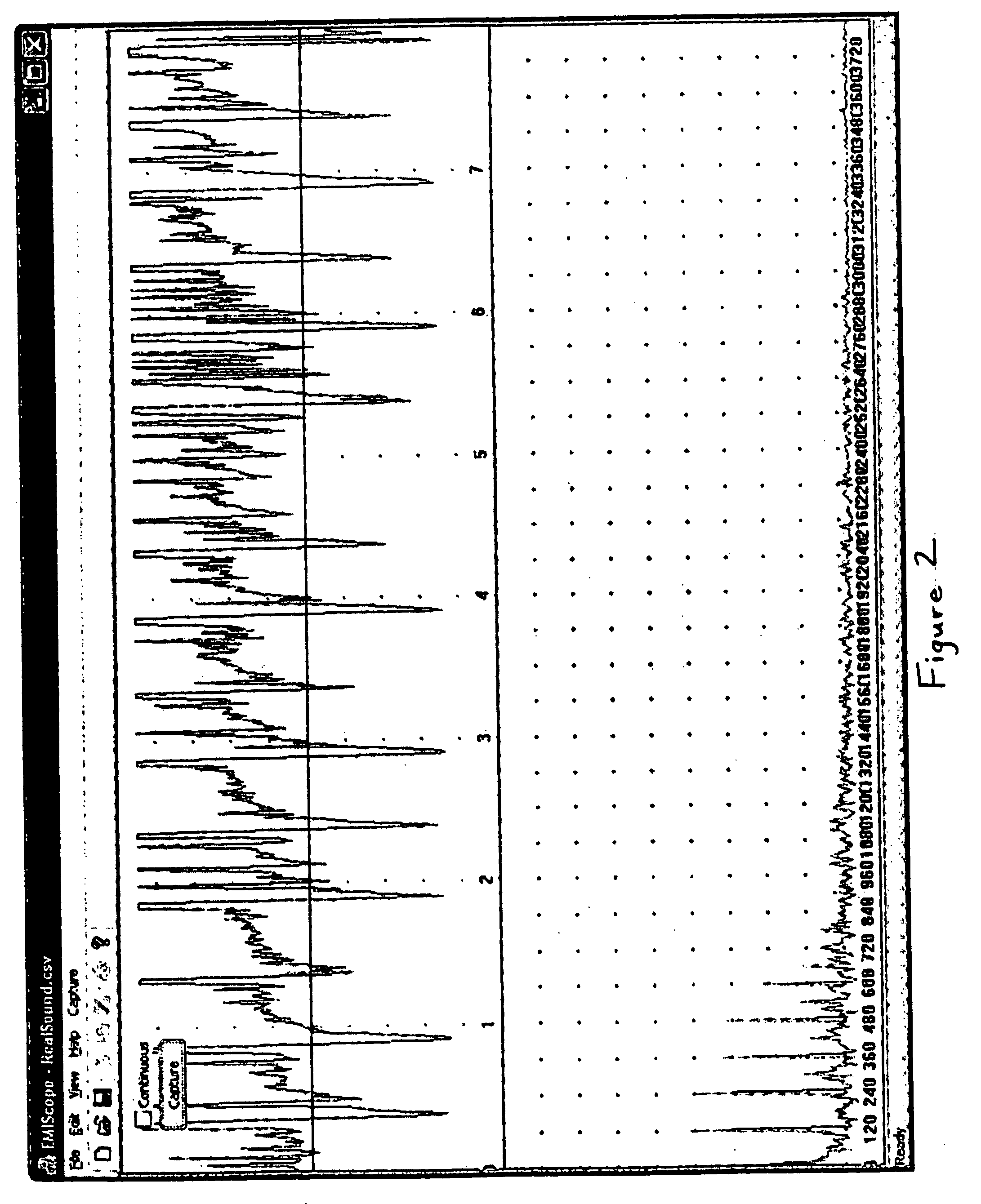System and method for detecting impaired electric power equipment
a technology of electrical equipment and detection method, applied in the field of system and method for detecting impaired electrical equipment, can solve the problems of limiting or disrupting the operation of the electrical system, electromagnetic radiation may interfere with the operation of other electrical systems, and many sophisticated electrical systems are becoming increasingly sensitive to the effects of electromagnetic radiation
- Summary
- Abstract
- Description
- Claims
- Application Information
AI Technical Summary
Benefits of technology
Problems solved by technology
Method used
Image
Examples
Embodiment Construction
)
[0017] The present invention is directed to a system and method for detecting impaired electric power equipment. FIG. 1 illustrates one example of a system of the present invention. In FIG. 1, the system 10 is comprised of a signal detection circuit 12. Signal detection circuit 12 may be any device that is adapted to receive radio frequency electromagnetic radiation or radiation in another desired frequency range. The particular type of signal detection circuit 12 may be selected to detect electromagnetic radiation within a desired frequency range. For example, the signal detection circuit 12 of an exemplary embodiment of the present invention may be adapted to detect electromagnetic radiation in a frequency range outside of the normal operating frequency range of the energized electrical equipment to be tested. Furthermore, in some embodiments of the present invention, it may desirable for the signal detection circuit 12 to detect electromagnetic radiation in a frequency range tha...
PUM
 Login to View More
Login to View More Abstract
Description
Claims
Application Information
 Login to View More
Login to View More - R&D
- Intellectual Property
- Life Sciences
- Materials
- Tech Scout
- Unparalleled Data Quality
- Higher Quality Content
- 60% Fewer Hallucinations
Browse by: Latest US Patents, China's latest patents, Technical Efficacy Thesaurus, Application Domain, Technology Topic, Popular Technical Reports.
© 2025 PatSnap. All rights reserved.Legal|Privacy policy|Modern Slavery Act Transparency Statement|Sitemap|About US| Contact US: help@patsnap.com



